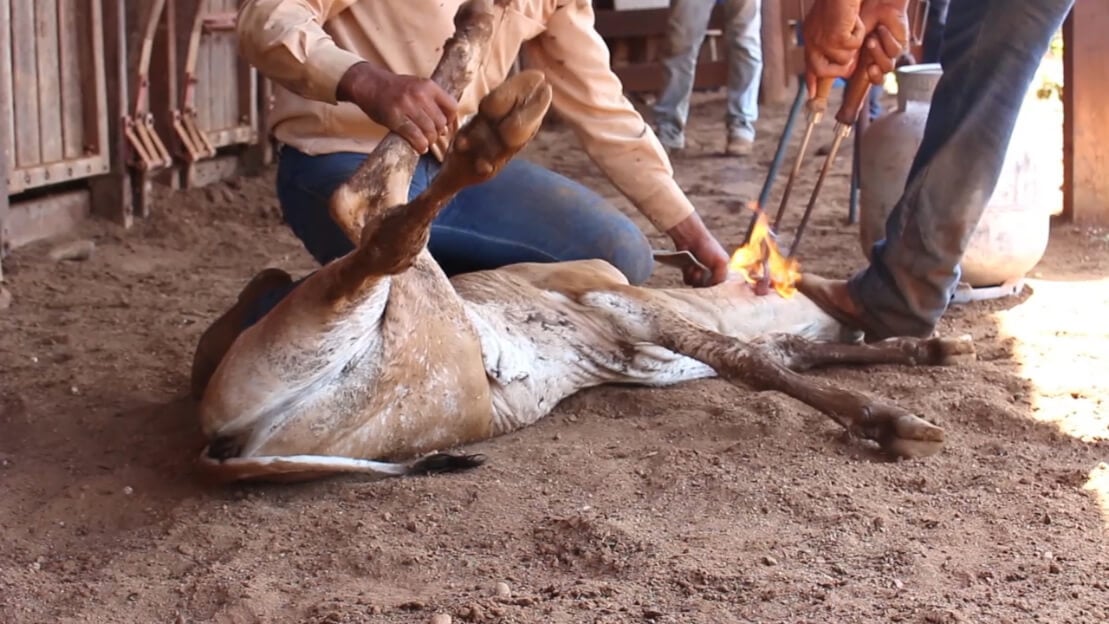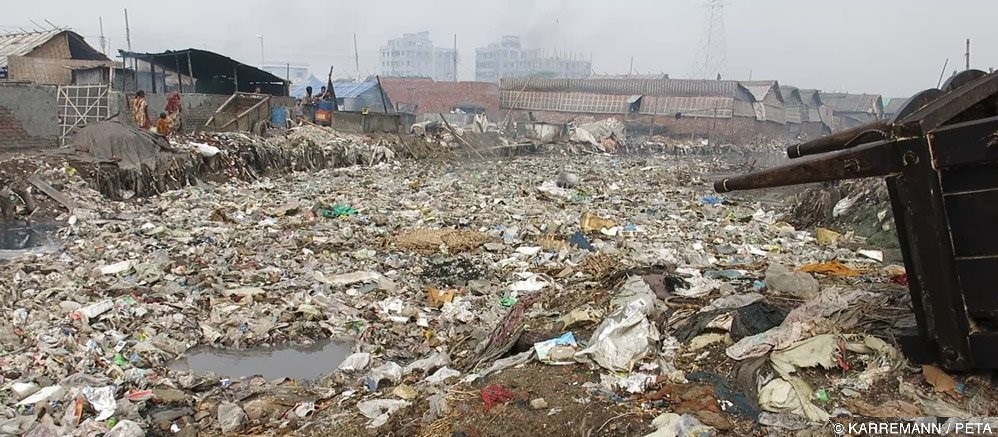UN INT Intro Text w/ Centered Large Responsive Image - *Important Note* You must UNLINK this shared library component before making page-specific customizations.
H&M claims that no animal should ever suffer in the name of fashion. Yet the company sells leather, which often comes from cows who endure confinement, extreme crowding, disease, and deprivation of food and water.

Branding, tail-docking, dehorning, and castration are all commonly performed without painkillers, and animals are transported hundreds of miles to feedlots and abattoirs where many are skinned while still conscious.
PETA's most recent leather exposé revealed that JBS S.A., the world's largest leather processor, brands calves on the face and electroshocks and beats gentle cows and bulls before turning them into leather goods. Such horrific treatment of cows used for leather doesn't just occur on Brazilian cattle ranches. The abuse is standard industry practice and is consistent with what we expose every time we look at the leather industry, whether in Bangladesh, China, India, or even the United States. A PETA video exposé in China revealed that even dogs are being bludgeoned and killed so that their skin can be turned into accessories sold around the world. No matter where it comes from, leather is the product of cruelty.
Leather also takes a huge toll on the environment, which H&M claims to take seriously. But the company continues to sell the material despite knowing that animal agriculture is the single greatest contributor to the greenhouse gases that cause climate change as well as the source of a host of pollutants that are wreaking havoc on the planet.

A company of H&M's size and scale has a tremendous impact on the environment, and using leather exponentially increases the negative effects. Raising animals for leather requires vast quantities of water and wide tracts of pastureland, which must be cleared of trees. Animals on factory farms produce 130 times as much excrement as the entire human population, without the benefit of waste-treatment plants. Run-off is a major source of water pollution, and the US Environmental Protection Agency has said that pollution from farmed animals is a significant threat to our waterways.
Animal skin is also turned into finished leather using a variety of dangerous substances, including mineral salts, formaldehyde, coal-tar derivatives, and various oils, dyes, and finishes – some of them cyanide-based. Because of this, groundwater near tanneries has been found to have highly elevated levels of a variety of toxic substances, leaving nearby residents plagued by higher rates of cancer and other skin and respiratory diseases.
H&M already uses innovative vegan leather options that mimic the style and aesthetic of leather, and more consumers than ever are wearing vegan because of their concern for the environment and animals. Committing to selling only vegan leather would legitimize H&M's claims of being ethical and sustainable and mark it as a true industry leader.
Let H&M know that it needs to respect animals and the environment by using only vegan leather.